Original Strength for Baseball Players
Aug 21, 2016

And now, a guest article from OS Instructor, Mark Shropshire. If you are a coach, a trainer, or a strength enthusiast, this article is a MUST read.
As OS Instructors, Coaches and practitioners we all know the benefits of Original Strength for restoring our natural movement. In athletics this natural movement is expressed with speed, power and grace. It is done largely based on reflex decision making both at a physical and mental level. In order to prepare for the demands of competing, especially at the highest levels, several thousand hours of practice must be done to perfect the mechanics demanded by the particular sport. But what if the reflexive stability we need to move optimally is missing? What if the vestibular system, our sensory motor integration system is off line? The human body will always pick what is easier, not what is best. In terms of movement this is called compensatory patterns of movement. Our bodies crave stability and will get it where ever they can. Thus, if our true stabilizer muscles are not working well we will substitute another muscle or group of muscles to do the job for them. Usually these muscles are in close proximity to the dulled reflexive stabilizers.
Compensatory patterns of stability are developed in the body as a poor substitute for our original design. Over time these inferior patterns become a "new normal" and stiffness or muscle tightness is the result. Muscles that move joints are easily fatigued, muscles that stabilize are not. So what you are really feeling is a tired, overused muscle, not a tight one. Stretching relieves the tightness, foam rolling can help as well......but the stiffness never really goes away. That's because you are addressing the symptom, not the cause of the problem. This is where the basic 5 resets of Original Strength come into play. They restore your body's natural patterns of stability allowing muscles that are designed to be movers of joints to relax and do what they are supposed to do. The resets stimulate the neural reflexivity of the core and nourish the central nervous system. They down regulate the sympathetic drive and muscle guarding associated with compensatory and often times painful movement.
If you're asking your self "what does this have to do with baseball?" The answer is: everything. Honestly this could have been written for any sport but i chose baseball, largely based on the fact that aside from being an OS Instructor I am also a strength and conditioning coach who trains a lot of baseball players. In my 20 plus years in the field I've been fortunate to have trained a few 1st round major league draft picks as well as others who have been drafted in the lower rounds. These are the cream of the crop, very talented athletes. The majority of players I work with are at the high school and college level. The one thing that ties these groups together is the risk of injury either in training or in actual play. As coaches we can have a profound effect on this injury risk and should strive for innovative ways to minimize it while at the same time improving athletic performance.
Few other athletes see as many injuries to elbows and shoulders as baseball players. Throwing a baseball creates a huge amount of stress on the throwing arm and body in general. As an example, observe the mechanical stress of pitching:
As the ball is being accelerated toward the release point, the humerus is internally rotated at speeds of 7,000- 9,000 degrees per second. Just before ball release, the elbow reaches maximal extension angular velocity and can hit speeds of over 2,000 degrees per second. The shoulder distraction force can reach as high as .75 times body weight in kids and 1 to 1.75 times body weight in adults.
The lower body generates a majority of this force and transfers it up the kinetic chain, through the arm and into the ball at the release point. The critical structures involved in this energy transfer are the reflexive core and reflexive scapular stabilizers and rotator cuff. When the scapula functions poorly and the reflexive core is offline, energy transfer becomes inefficient and the result can be injurious. The question becomes how can we as trainers, coaches etc. play a role in helping baseball players perform better?
First, since the Original Strength resets and all of their progressions and regressions are the foundations of all other movements, start there. This is your cornerstone of movement. It is the key to unlocking the unlimited potential inside all of us. If you're reading this and don't know what the resets are I urge you to find an OS certified coach who can teach you ( https://originalstrength.net/find-a-coach/ ) Or better yet, get to an OS workshop and learn them first hand ( https://originalstrength.net/events/ ). I've yet to meet anyone who regretted the investment in themselves or their athletes. A quick overview of the big 5 resets is in order.
Diagrammatic breathing by it's self can relax tired shoulders and stiff necks. It strengthens your core and helps to calm the mind and body. Breathing is one of the first things we do in life and it's one of the last things we will do so it seems appropriate that we do it correctly. Breathing techniques can be found in all the great disciplines: yoga, martial arts and meditation come to mind. They've been around for a while so just maybe they are on to something?
Head nods and rotations not only stimulate your vestibular system but they also mobilize your thoracic spine. The T-spine is important to baseball players since a lack of thoracic mobility is often noted as a root cause of shoulder injuries like AC joint impingement and tendinitis.
Segmental Rolling further mobilizes the T-spine and neurologically connects the shoulder to the opposite side hip. In essence it connects you like a big X. Think about how you run or throw a ball or even hit. Your shoulder and your opposite hip are intricately connected in those processes. The go between these structures is your core. Rolling helps to strengthen these connections via head and extremity driven, midline crossing movement.
Rocking is where reflexive strength starts to be developed in shoulder. The compression of the wrist, elbow and gleno-humeral joint stimulates proprioceptors that reflexively stabilize those structures. It is this reflexive stability that is often missing, dulled or late to the movement party and the result is painful movement. Rocking also helps reset the natural curvature of the spine enhancing posture.
Crawling takes reflex stability to another level. Here true strength is developed and reflexes become hard wired. It's important to note that none of these resets are more important than the others. Since we are all different and have different needs the resets will have varying degrees of impact on each individual person.
Second, the way we train our athletes in the gym can have a far reaching and lasting effect on their performance out of it. Restoring natural movement shouldn't just be relegated to the warm up and cool down phases of a performance program. It can be implemented directly into it. OS resets that mimic strength training movements can be used to improve the movement quality of that exercise. For example, the reflexive core stability, hip hinge, and flexion/extension movements of the knee and ankle seen in rocking is a great compliment to those similar movements observed in squatting or deadlifting.
Video of rocking
https://youtu.be/IXCHcmSD-r8
Video of squatting
https://youtu.be/6Ce-0Il1E-A
Still picture of rocking w lines drawn Still picture of deep squat w lines drawn
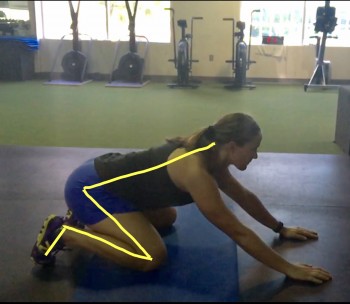
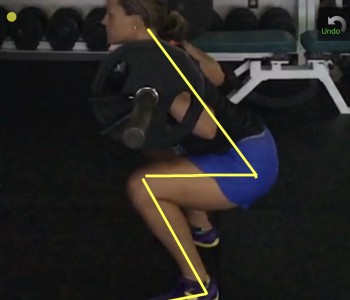
As you can see, the joint angles between movements in this individual are similar. As the reflexive core is stimulated via rocking, it becomes more neurologically active/sensitive to input. As a result of this heightened sensitivity, the core gets better at stabilizing the spine and pelvis in the loaded upright rocking position aka squatting.
Rocking can also be an effective reset for pressing movements since the compressive nature of rocking stimulates the proprioceptors in the hands, wrist, elbow, Gleno humeral joints and scapular stabilizers. Further, movements that cross midline or work in a contralateral pattern simulate the more "natural" unloaded patterns seen in many athletic movements. Additionally and equally as important to this philosophy is that the human body is designed to move in sequential patterns of joint movement, ( think Turkish Get Ups or 1 arm KB snatch to reverse lunge ) not in isolated, singular joint movements ( think hamstring curls ). For example, instead of bench press which some baseball coaches perceive as dangerous to the throwing shoulder, an alternative is the one arm anti-rotational dumbbell press. Here the athlete is laying off set on a bench supported by the head and shoulder blade of the non working arm. The hips are off the side of the bench. This configuration forces the core to become active as well as the gluts and allows the pressing shoulder to be able to rotate with the load. The load is now being distributed throughout the system of the shoulder, obliques, and gluts (crossing midline)instead of literally being shouldered by the Gleno humeral joint alone in the conventional bench press.
Conventional dumbbell chest press One arm anti-rotational chest press
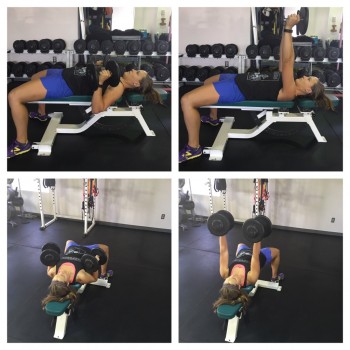
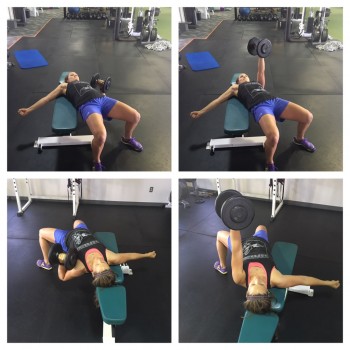
Overhead pressing for the shoulder (or its ugly cousin seated overhead pressing), another exercise that has been scrutinized by baseball coaches and players as dangerous due to complications with a type 2 or type 3 acromion in some athletes can be trained another way as seen through the lens of Original Strength. Loaded Rocking, elevated rocking, loaded elevated rocking, reverse crawling or reverse loaded crawling are just some of the ways you can safely and effectively strength train the shoulder in a pressing with out pressing environment.
Seated dumbbell shoulder press (pic)
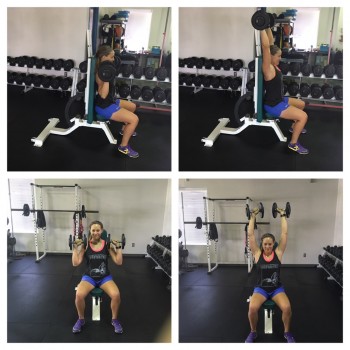
Loaded rocking/knees elevated loaded rocking (video)
https://youtu.be/lQe6FZD5Ins
Reverse baby crawl (top) & leopard crawl (bottom) video
https://youtu.be/eE-LND8L9dA
Reverse chain loaded baby crawl (top) & reverse chain loaded leopard crawl (bottom) video
https://youtu.be/Yd_8QMAA-7g
Reverse baby commando crawl (top) & reverse leopard commando crawl (bottom) video
https://youtu.be/Xqg0jBMqKwY
In all of the above examples, the shoulder joint is reflexively stabilized as the gravitational load of the body is transitioned over it. The load can be increased by dragging implements such as chains or sleds or by crawling slowly ( more time under tension). In the case of crawling, the reflexive stability of the shoulders and core as well as the neurological pathways are hard wired and developed within the bodies natural gait pattern in a contralateral fashion. Not only are you improving the stability and motor control of the shoulder, you are enhancing the anti rotational aspect of core stability in a similar pattern of movement as gait. Since the load placed on the core is greater during the crawl than in the upright posture of gait, it has to work harder. Once we come up on to our feet, the body "remembers" to activate the core, stability is enhanced, hips and shoulders articulate more freely and we begin to move the way we were designed to move. In other words, we take the breaks off and become more powerful than we thought possible. For the athletes I work with it means they can move better in the gym and on the field, recover faster and become increasingly resilient to injury.
By observing how the human body was designed and applying the principles of Original Strength, we can safely and effectively create strength training programs that not only enhance strength and performance but improve movement quality at the same time.
 MARK SHROPSHIRE, MS, ORIGINAL STRENGTH INSTRUCTOR, SFG, FMSII, CKFMS, OSSA, SHROPSHIRE SPORTS TRAINING
MARK SHROPSHIRE, MS, ORIGINAL STRENGTH INSTRUCTOR, SFG, FMSII, CKFMS, OSSA, SHROPSHIRE SPORTS TRAININGMark Shropshire is the President and CEO of Shropshire Sports Training and has been training athletes and other professionals for more than 21 years. Prior to starting his own company in 2002, Mark was the Director of Cal Ripken Jr. Sports Acceleration in Columbia, Maryland from 1998 - 2002. He has been actively involved with Original Strength since 2012, and was promoted to instructor status in 2015 leading "OS Pressing RESET" workshops throughout the United States.
Mark has had the opportunity to work with a wide variety of athletes in his career which includes members of the NFL, MLB, NHL, Professional Soccer, US Special Forces, SWAT, US Marshals, US Secret Service, as well as numerous individuals who play at the Division I, II, and III collegiate levels. In addition to his certifications and continuous education on industry standards, Mark holds a Black Belt in Tae Kwon Do.
Comments (0)
Please login to comment.